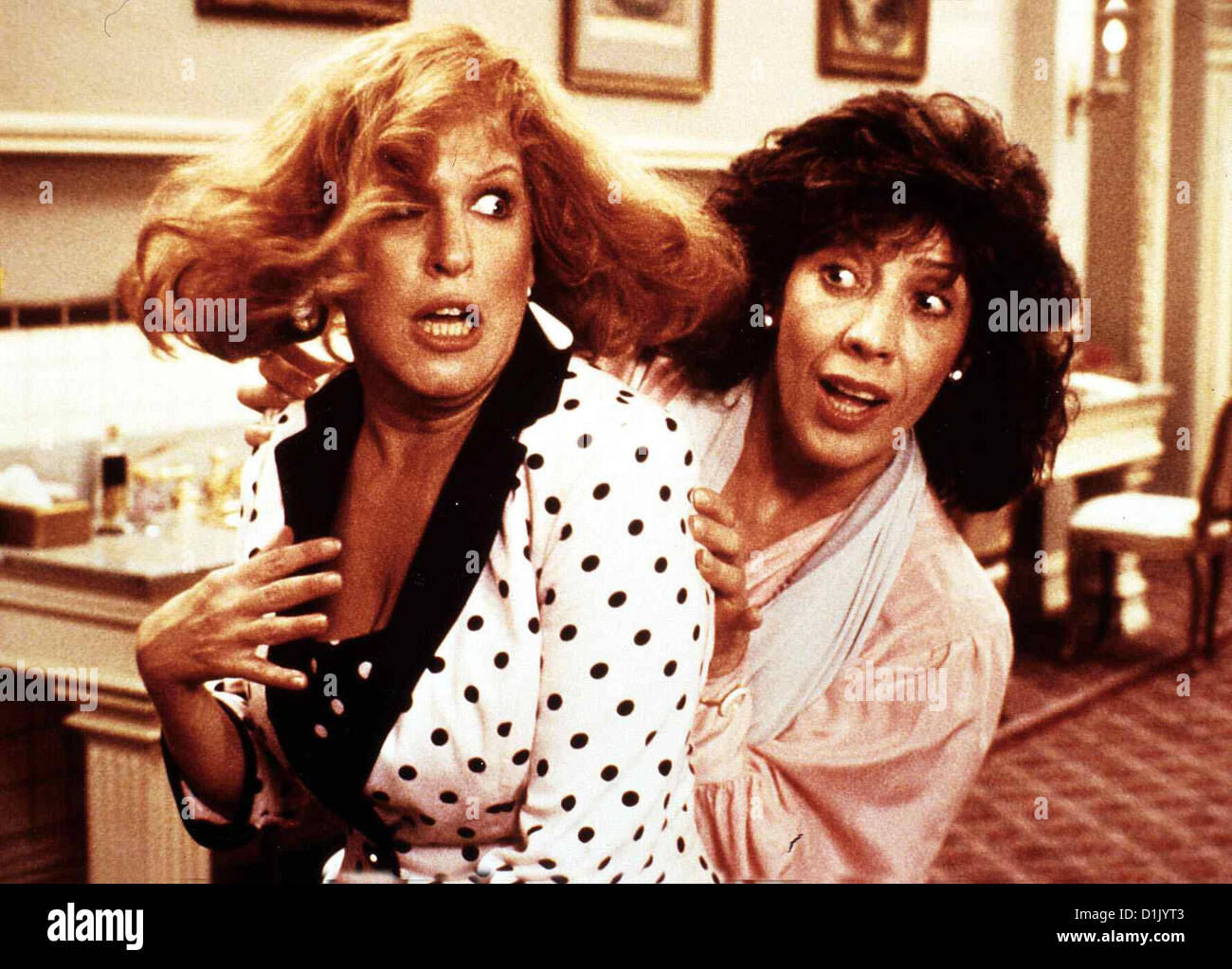


Because the plot requires both sets of twins to come in close quarters with one another – the country twins go into New York to stop the sale of their town’s only main business to a Frenchman intent on strip mining the countryside, and said business is run by the other set of twins – there are several scenes in the film in which one twin walks through the scene and narrowly misses running into the other, sometimes only by a hair. The laughs to do not come conventionally, either.
BETTE MIDLER LILY TOMLIN FILM MOVIE
Their combined chemistry is what makes the movie plausible on any level. Both Midler and Tomlin seem to have more energy playing the mean twins, and who can blame them? Here are two actors who don’t so much eat up the scenery as much as they swallow it whole, and their potent on-screen personalities dictate the need for more aggressive characters. This, however, does not become nearly as thought-provoking a statement as it could be, mainly because the nice sisters are not very fun to be around. We suspect the writers are trying to make a statement about genetics in their execution of the nice characters – because the Tomlin twins belong in the country, the one that lives in New York feels displaced by metropolitan life, while the out-of-place Midler character is envious of those who live in that kind of environment. Each plays dual roles that are a dichotomy in personality types: in one set that lives in New York, Midler is a power-hungry business CEO who walks through rooms with a disapproving scowl on her face, while the Tomlin character is uncertain of herself and clumsy in the country version, Midler is sweet and driven by the wonder of the big city, while Tomlin hisses at corporate types and makes her points in scathing but lively analogies (“Is a Frog’s ass water tight?”). One set of twins is played by Bette Midler, the other by Lily Tomlin. Inevitably, this will lead to the twins growing up mismatched not so inevitably, the father of one set of twins overhears the other naming their children Rose and Sadie, and decides that his set would benefit from having the same names. Great for the mothers, not so great for the nurse: so used to strolling leisurely down the halls of her quiet facility, now she has to react quickly to the deliveries, and does so by making the critical mistake of mixing the babies up in their crib. As luck would have it, another couple from that town is also ready to deliver their own bundle of joy, and the two would-be mothers wind up in rooms opposite one another, where the doctor discovers that – get this! – both of them are delivering twin girls. She is rushed to a nearby hospital in a small country town called Jupiter Hollow, where everyone speaks colorfully and the aged hospital nurse hums “Amazing Grace” while delivering pills to patients. A couple are driving through open land in West Virginia, scouting sites for some kind of business transaction, when the wife goes into labor. You can practically visualize the actors gathered around a reading table, struggling hard to choke back groans of displeasure while sifting through the script pages before someone decides to speak up and say, “Hey, let’s go for broke and go over-the-top with this crap.” They are hog-tied in a screenplay that is dimwitted and force-fed, but they are aware of their plight and have immense fun at exploiting those problems to their advantage. And they do so to stellar conviction, which is how the movie finds its success. The movie is an oddity of incessant proportions, a comedy with few laughs but many unwarranted chuckles, which lives and dies on the notion its silly premise will at least be vague enough to provide its actors with great opportunities to improvise. Never mind the fact that the moment anything seems to be amiss, not one character is observant enough to point out the bizarre behavior problems they encounter. But here they are, slogging their way through material so clearly beneath their craft, barely holding composure against various plot inclinations that will require them to react to situations that are both unrealistic and downright impossible. You can practically reach out and touch the promise offered by the big names it houses: Bette Midler, Lily Tomlin, Edward Herman and Fred Ward, all of whom were recognizable entities of their heyday, and combined seem to contradict the very notion that any film starring them could be so deeply flawed. Deep from within the doldrums of mediocre 80s comedies, “Big Business” endures as a curiosity on the credits list of several fine actors.


 0 kommentar(er)
0 kommentar(er)
